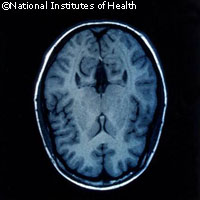Research sheds light on evolution of the brain
EU-funded researchers have traced the evolution of the hypothalamus, a region of the brain, back to marine, worm-like ancestors, shedding new light on the evolution of the vertebrate brain. The vertebrate hypothalamus produces hormones, chemical signals which control growth, metabolism, reproduction and many other physiological processes. Insects and nematode worms also produce hormones, but these look very different to vertebrate hormones, leading scientists to suppose that these hormone-secreting brain regions had arisen after the vertebrates and invertebrates had gone their separate evolutionary ways. However, researchers then found vertebrate-like hormones in worms and molluscs, indicating that these structures may be older than first thought. Writing in the journal Cell, scientists from the European Molecular Biology Laboratory (EMBL) and Free University of Berlin describe how they compared the hormone secreting nerve cells of the zebrafish, a vertebrate, and the annelid worm. They found striking similarities between the two groups; both cell types looked similar and were located in the same position in the developing brains of the two species. They also shared the same molecular make-up. The similarities cannot be explained by coincidence, indicating a common evolutionary origin of these cells. 'It is likely that they existed already in Urbilateria, the last common ancestors of vertebrates, insects and worms,' commented Detlev Arendt of the EMBL and one of the authors of the paper. The cells studied are multifunctional; as well as being able to secrete hormones, they also have sensory properties, being responsive to light and certain chemicals. The researchers believe that these 'sensory-neurosecretory' cell types are among the most ancient types of nerve cell. They would have been able to respond directly to changes in the marine environment. Over time these multi-functional cells clustered together into brain centres and diversified into a range of specialised cells such as those we see in the modern vertebrate brain. 'These findings revolutionise the way we see the brain,' commented Kristin Tessmar-Raible, the lead author of the paper. 'So far we have always understood it as a processing unit, a bit like a computer that integrates and interprets incoming sensory information. Now we know that the brain is itself a sensory organ and has been so since very ancient times.' EU funding for the work came from the Marine Genomics Europe Network of Excellence and the Marie Curie ZOONET training network.
Countries
Germany



